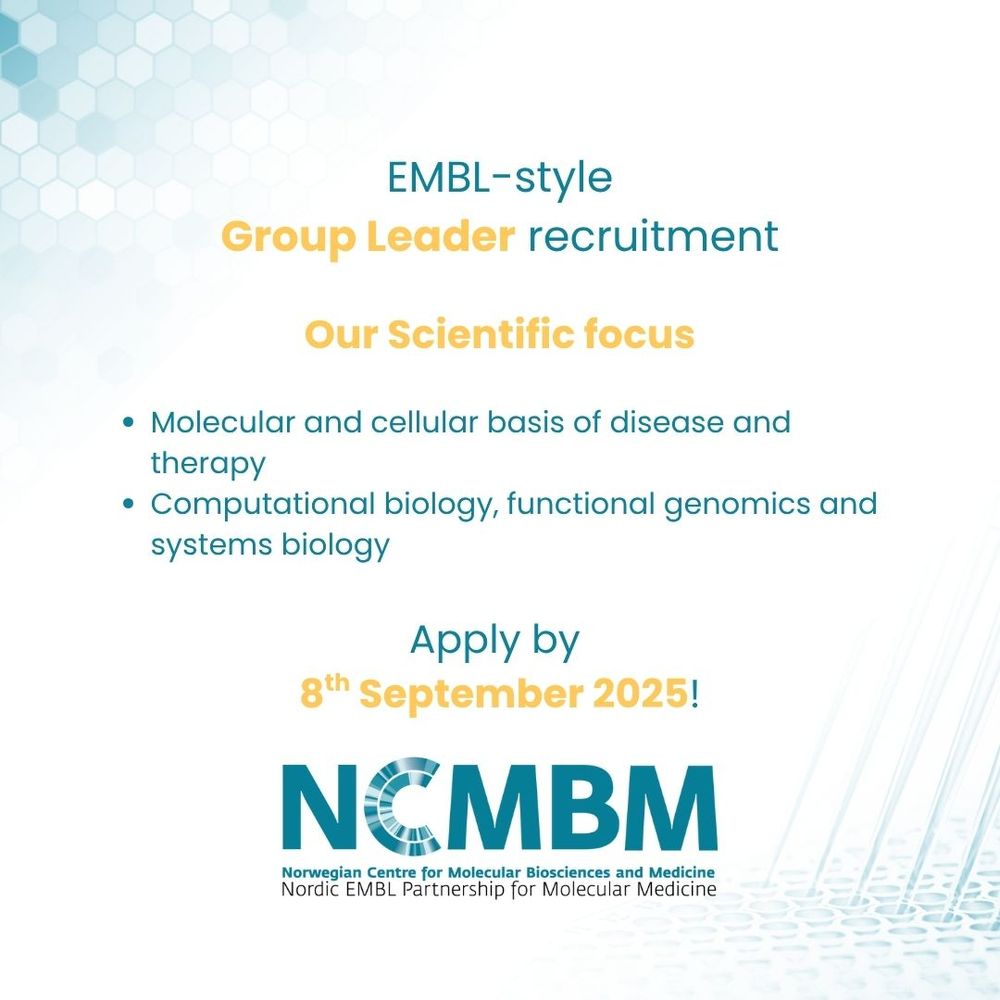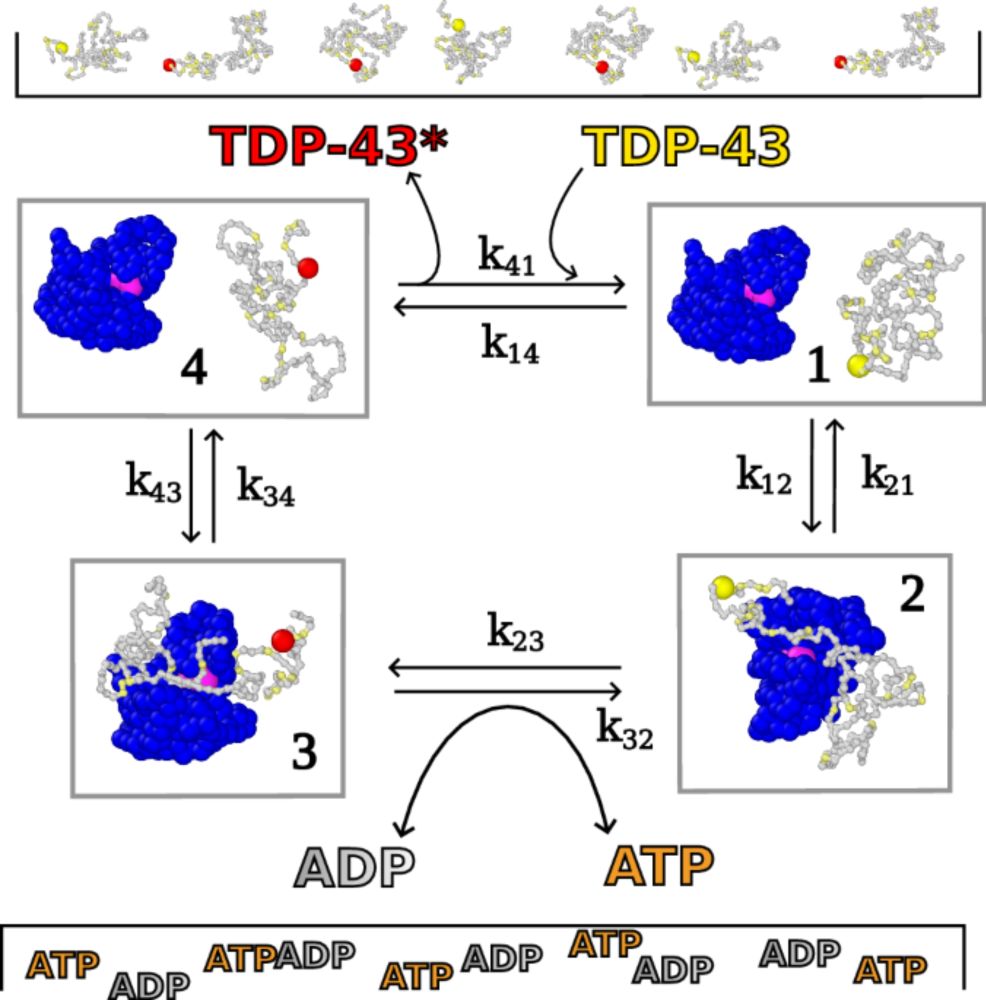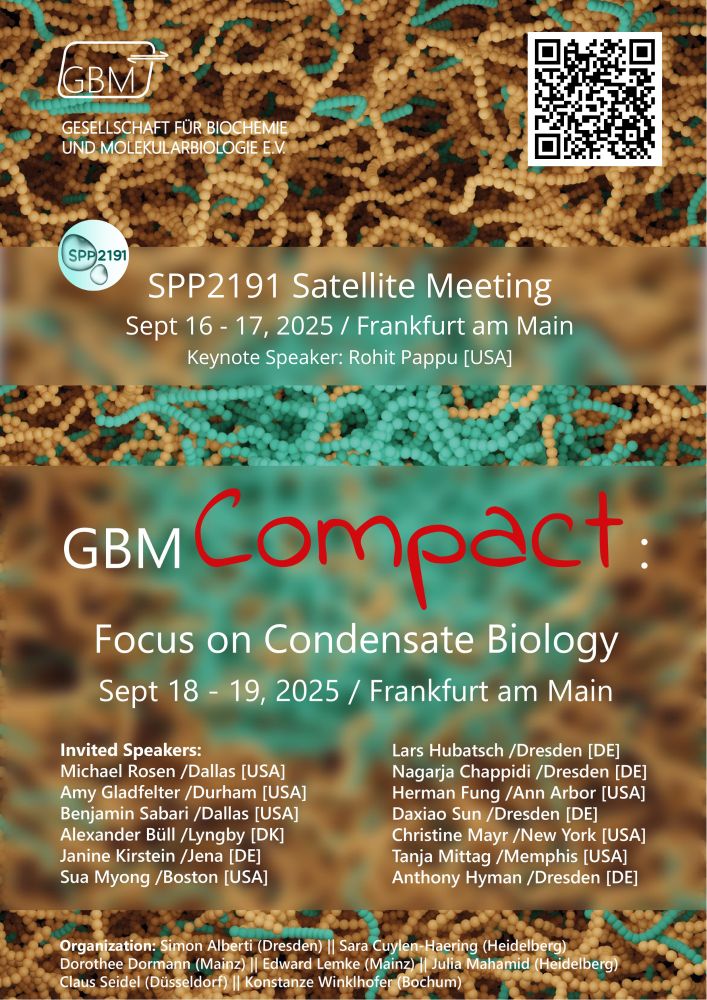Katja Luck
@katjaluck.bsky.social
74 followers
34 following
3 posts
Group Leader at Institute of Molecular Biology, Mainz, Germany
Posts
Media
Videos
Starter Packs
Reposted by Katja Luck
Reposted by Katja Luck
Reposted by Katja Luck
Reposted by Katja Luck
Ben Lehner
@benlehner.bsky.social
· Jun 25

Allostery is a widespread cause of loss-of-function variant pathogenicity
Allosteric communication between non-contacting sites in proteins plays a fundamental role in biological regulation and drug action. While allosteric gain-of-function variants are known drivers of onc...
biorxiv.org
Reposted by Katja Luck
Katja Luck
@katjaluck.bsky.social
· Jul 1

Variant characterization in the intrinsically disordered human proteome
Variant effect prediction remains a key challenge to resolve in precision medicine. Sophisticated computational models that exploit sequence conservation and structure are increasingly successful in t...
www.biorxiv.org
Reposted by Katja Luck
Reposted by Katja Luck
Reposted by Katja Luck
Reposted by Katja Luck
Reposted by Katja Luck
Arne Elofsson
@bioinfo.se
· May 5
Limits of deep-learning-based RNA prediction methods
Motivation: In recent years, tremendous advances have been made in predicting protein structures and protein-protein interactions. However, progress in predicting the structure of RNA, either alone or...
www.biorxiv.org
Reposted by Katja Luck
Reposted by Katja Luck
Gräter lab
@graeterlab.bsky.social
· Apr 4

Max Planck Research Group Leader (W2) in Molecular Design
We are looking for exceptional early-career scientists conducting computational research with a proven record of accomplishment. The primary focus of this call is on candidates proposing research on b...
tinyurl.com
Reposted by Katja Luck
Reposted by Katja Luck
Reposted by Katja Luck
BioMassSpec
@realbiomassspec.bsky.social
· Mar 25

Holdup Multiplex Assay for High-Throughput Measurement of Protein–Ligand Affinity Constants Using a Mass Spectrometry Readout
The accurate description and subsequent modeling of protein interactomes require quantification of their affinities at the proteome-wide scale. Here we develop and validate the Holdup Multiplex, a versatile assay with a mass spectrometry (MS) readout for profiling the affinities of a protein for large pools of peptides. The method can precisely quantify, in one single run, thousands of affinity constants over several orders of magnitude. The throughput, dynamic range, and sensitivity can be pushed to the performance limit of the MS readout. We applied the Holdup Multiplex to quantify in a few sample runs the affinities of the 14–3–3s, phosphoreader proteins highly abundant in humans, for 1000 different phosphopeptides. The seven human 14–3–3 isoforms were found to display similar specificities but staggered affinities, with 14–3–3γ being always the best binder and 14–3–3ε and σ being the weakest. Hundreds of new 14–3–3 binding sites were identified. We also identified dozens of 14–3–3 binding sites, some intervening in key signaling pathways, that were either stabilized or destabilized by the phytotoxin Fusicoccin-A. The results were corroborated by X-ray crystallography. Finally, we demonstrated the transferability of the Holdup Multiplex by quantifying the interactions of a PDZ domain for 5400 PBM peptides at once. The approach is applicable to any category of protein-binding ligands that can be quantifiable by mass spectrometry.
pubs.acs.org
Reposted by Katja Luck
Reposted by Katja Luck















